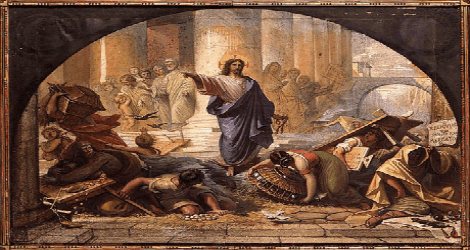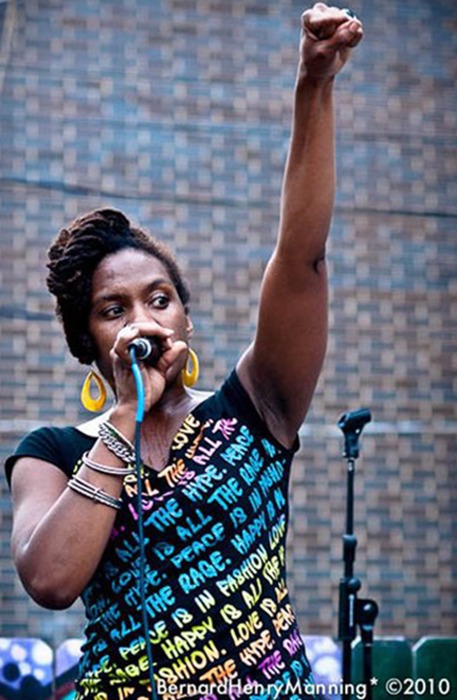By now you’ve probably developed an image of the non-head in your mind: a person who’s outside the culture of hip-hop; a person who is more than likely—I’ll say it—white. (No surprise: so am I.) Though I admit it’s difficult to deconstruct Talib Kweli’s stature among non-heads without a certain degree of smugness, it’s a shame, too, for Kweli is so earnest. He is also part of a great tradition in hip-hop of acute social consciousness. Chuck D, frontman for Public Enemy, famously called hip-hop “the black CNN.” During the Golden Era (1988-92) of hyper-creative and hyper-conscious hip-hop that Eddie refers to and wisted for in his youth, hip-hop was for many the principal means of understanding how people lived in urban black America.
My contention is that to hold Kweli, a rapper of such modest talent, in such high esteem is to disrespect the artform; it is to ignore hip-hop’s artistic merits. This is a grave, potentially racist act, for it is by and large people of color, oppressed people, poor people, who fashion hip-hop’s artistic criteria. When early commentators derided hip-hop in the Golden Era, alarmed by the heavy content of violence and misogyny, rappers defended themselves by claiming to provide objective reportage of the crisis in urban black-American communities. Rappers did themselves a disservice on two counts: one, they failed to conceive of the negative effect the content of their lyrics had on young people, which almost a quarter-century later can hardly be denied; and two, hip-hop’s sheer artistry went overlooked, whatever the content. Kweli’s beatification by non-heads—forget it, white folks—works as an inverse of the same problem. Outside commentators rightfully find Kweli’s message praiseworthy, but fail to understand why it doesn’t reach a wider audience: because it’s wack.
Thankfully there’s a happy medium in hip-hop. Rakim, who revolutionized the form (he bares comparison to Cervantes as much as to his forebear Melle Mel), inspired many listeners with righteous religious (Islamic) content sprinkled throughout intricate battle raps. No accident that Rage Against the Machine, as Eddie remembers, covered “Microphone Fiend”—which, yes, is about Rakim’s addiction to emcee-ing. Lupe Fiasco, a contemporary favorite of non-heads (Eddie and I like him, too), distinguishes himself from the likes of Kweli with formal innovations and incredible wordplay. And what of household names like Jay-Z and Lil’ Wayne, rarely confused for conscious rappers? Here the quest for a happy medium becomes murkier. If Rakim is hip-hop’s first great lyricist, Jay-Z is perhaps the finest, an ageless reserve of felicitous metaphor and timing. Lil’ Wayne’s histrionics are always good for an admiring smirk. But each could fairly be accused of materialistic excess, degradation of women, and nihilism.
Rhymes & Reasons, Eddie’s brainchild and the labor of my love of hip-hop, takes as its starting point the premise that hip-hop, rap music, is more than entertainment, more than something to dance to, more than beats and rhymes. With apologies to A Tribe Called Quest, hip-hop is life. Beginning with “The Message,” by Grandmaster Flash and the Furious Five, the lyrics have told a story of oppressed people, warts and all. Jay-Z, Lil’ Wayne, and countless others toe the line or wantonly cross into subject matter that ought to offend our sensibilities, whoever we are. But if they are true to the original spirit of the music, it will continue to reflect, and influence, reality. If we believe in social justice, we, all of us, ignore it at our own peril.
Rhymes & Reasons allows disparate members of hip-hop’s audience—hip-hop heads, broadly defined—to explain how their favorite hip-hop songs reached them. Each, people of color and even a few privileged white folks, tells a story, in some cases nothing less than his or her life story, in the context of a meaningful hip-hop song (or two, or three, or more). Insofar as hip-hop represents the experience of folks who’ve borne the brunt of injustice, Eddie and I exist outside the culture, no matter how much we love or how well we know the music. Thus we view the project as a means of ensuring the collective story of hip-hop is properly told, that all voices in the arena of discussion, conscious or not, get heard—and that whatever’s said is dope.
Read Hip-Hop: Rhyming and Reasoning Justice, with an article from Edward Vogel, co-creator of Rhymes and Reasons, and an interview with organizer and hip-hop artist Jasson Perez on 2Pac’s “Keep Ya Head Up”
____________________
Eric Roberts is a writer, photographer, and graduate student at the School of Social Service Administration at the University of Chicago. He is co-creator of “Rhymes & Reasons”.





Unbound Social